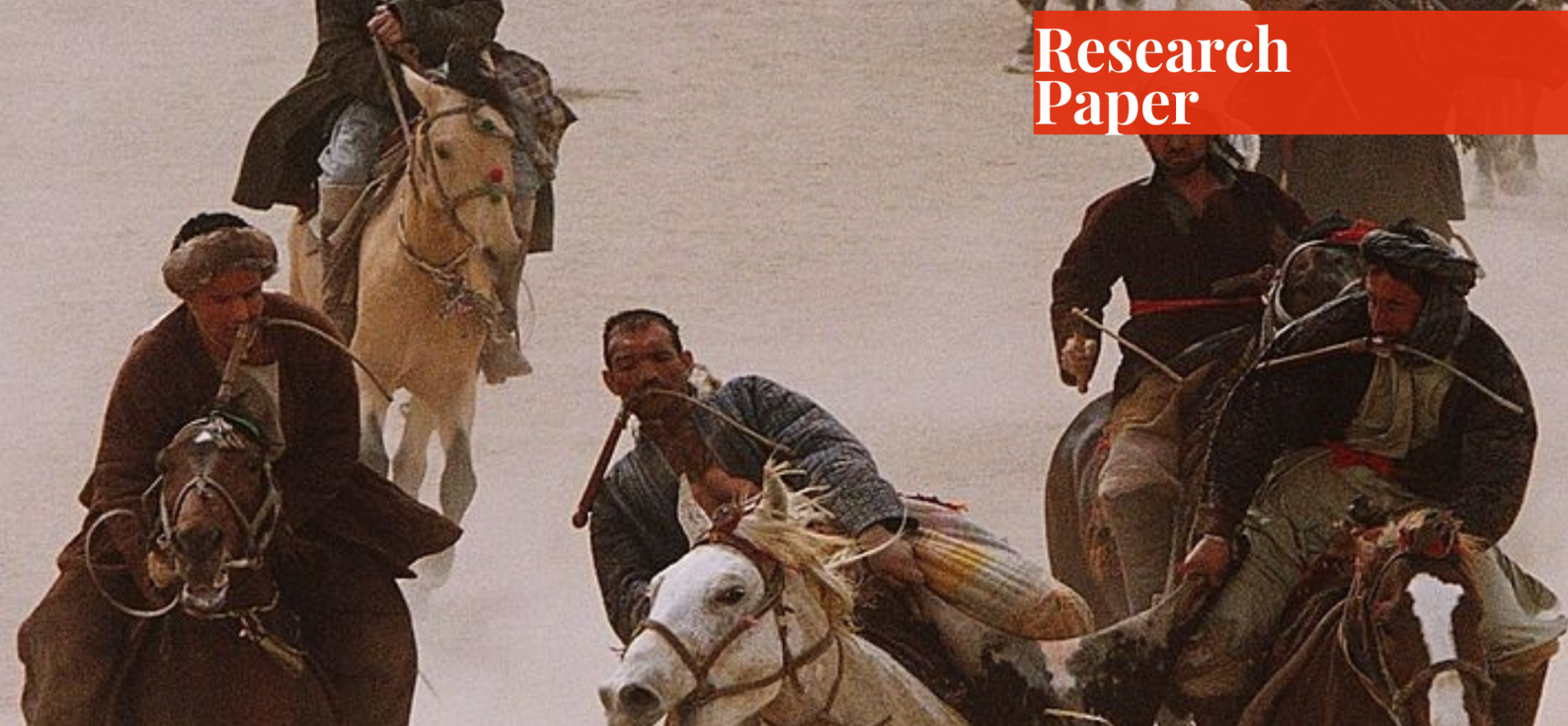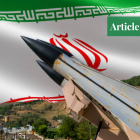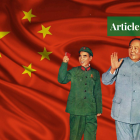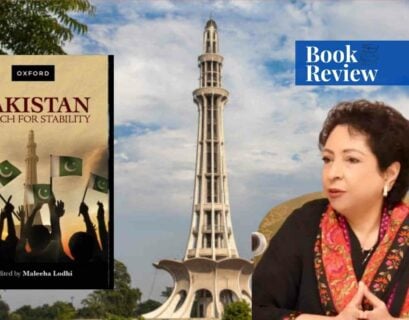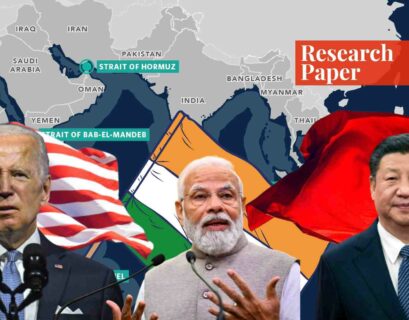The Warlords of Afghanistan
Any viable process of state-building in Afghanistan must include the local warlords. While the Western powers have included them in the process, they have not been able to utilize warlords efficiently. Therefore, the inefficient use of warlords by NATO is an important reason for the failure of the state-building process in Afghanistan.
Afghanistan has remained an important foreign policy issue for the United States. Under President Donald Trump, the Afghan peace process was resumed and despite political turbulence, appreciable progress has been made. This can be attributed to the serious commitment shown by Trump and Pakistani leadership towards a peaceful Afghanistan characterized by U.S withdrawal.
However, if the peacebuilding process is to be successful, it must be backed by robust state-making efforts. Lessons from previous peace initiatives show that the lack of proper state-making efforts has played a significant role in the failure of the peace process in Afghanistan. This paper will explore the reasons for the failure of state-making efforts in Afghanistan.
USA and NATO forces have not understood the socio-political dynamics of Afghanistan which has led to inconsistent and inaccurate policies that have been unsuccessful in forming a viable central state in Afghanistan. The paper will firstly explain the socio-political dynamics of warlord politics in Afghanistan.
Secondly, it will describe the measures taken by NATO and the U.S. for state-building post 9/11. Lastly, the paper will analyze these policies in light of the political dynamics of Afghanistan. The paper argues that the inefficient utilization of warlords is an important reason for the failure of the state-building process in Afghanistan.
Politics of Warlords in Afghanistan
Warlords have become an important part of Afghanistan’s polity since the Soviet intervention. They are defined as “a legitimate, charismatic and patrimonial military leader with autonomous control over a military force capable of achieving and maintaining a monopoly of large scale violence over a sizeable territory” (Giustozzi, 2012).
This definition has several implications for the social dynamics of the country. Firstly, warlords operate in areas where the state has little or no influence (Peake et al., 2004). Consequently, they fulfill the roles that a state is supposed to perform, which include providing socio-economic and military security to the regions where they have control.
The destruction of infrastructure due to the war since 1979 coupled with the historical skepticism of central control among Afghan people has resulted in a fragmented polity, dominated by warlords and local military commanders. The warlords in Afghanistan are ex-military commanders who have been able to maintain authority through loyal fighters’ corps and ties of patronage (Peake et al., 2004).
Regional Influence
The ability of a warlord to provide some level of security to a specific region helps them gain the support of the people. Control over security enables the warlord to control the trade in their region (Peake et al., 2004). Therefore, military control allows them to extend their control to the economic spheres of the region.
In fact, prominent warlords such as Abdul Rasheed Dostum and Ismail Khan taxed road networks in their regions as a source of collecting revenue. The alliance of a warlord with the people is not based on service provision alone; most of the warlords share ethnic, geographic, and tribal identities with the people in their region, which allows them to exploit a network of social ties to enhance their control in their region (Ginty, 2010).
For example, Ismail Khan was born in Herat’s Shindand district and shared geographical proximity to the people under his control (Giustozzi, 2012). Warlords exploit the tribal and ethnic rivalries to strengthen their alliances with the people. Given the localized scope of their power, warlords tend to focus on only maintaining a regional presence (Peake et al., 2004).
The existence of a weak center and strong regional fiefdoms reflects the regionalized scope of a warlord’s activity. The power and control of a warlord are predicated on the weakness of a central state; therefore, the weak central Afghan state is conducive to warlord politics in peripheral regions. This notion is illustrated by the example of Ismail Khan, who has vehemently criticized the central state in Kabul without showing any interest in taking over.
The Relationship Between the Warlords and the Civilians
Warlords have been able to control local militias in their region by controlling the flow of resources to these groups, alongside their political authority. Their ability to maintain law and order in their region has earned them the support of locals. Therefore, the warlords share a complex relationship with their region’s population, characterized by a mixture of exploitation and service provision.
For example, Ismail Khan’s governance was liked by the locals because he was able to control the behavior of militias towards the local population (Giustozzi, 2012). Moreover, the protracted conflict in Afghanistan has changed the political mindset in Afghanistan. The prolonged conflict has created a sense of opportunistic thinking, integral for the success of a warlord. This sort of thinking will become an important factor in the exploitation of state-building efforts.
Secondly, the protracted conflict has created war hysteria and distrust among the prominent Afghan leaders with regards to foreign intervention and central control. This point has been an important reason for the failure of state-building efforts. However, it is interesting to note that foreign patronage is an important source of income for the warlords (Ginty, 2010).
Therefore, the development of warlord politics is predicated on the absence of a state in these regions. The warlords derive their power from their ability to monopolize violence and extract revenue. The interests of warlords are bounded by the region they occupy owing to logistical and financial limitations. They have the capabilities of providing certain public services and employment as a form of patronage to the locals (Ginty, 2010).
State Building Efforts Post 9/11
The process of state-building in Afghanistan has been a long and inconsistent struggle, marred by ill-conceived policies and apathy of regional and international actors towards the crises. In the aftermath of U.S action against the Taliban, the Bonn Agreement was signed by Afghan leaders, the U.S., and NATO allies (Jones, 2005).
The state-building effort was to include the formation of a centralized bureaucratic state. an open market economy, and an extension of rights through a new constitution (Ginty, 2010). The main goal of the agreement was to establish peace and security, restore key government institutions, and reconstruct Afghanistan (Jones, 2005).
The objective of state-building was to deal with major internal security threats posed by the Taliban insurgency, Afghan warlords, and drug traffickers (Jones, 2005). According to the Bonn Agreement, “upon the official transfer of power, all mujahidin, Afghan armed forces and armed groups in the country shall come under the command and control of the Interim Authority, and be reorganized according to the requirements of the new Afghan security and armed forces”.
The Ministry of Interior and the Ministry of Defense were reformed. The important developments in the defense sector were the building of the Afghan National Army (ANA) and the Disarmament, Demobilization, and Reintegration (DDR) of ex-combatants (Jones, 2005). The DDR began functioning in 2004 and initially targeted 100,000 ex-combatants across six provinces: Kunduz, Bamiyan, Herat, Mazar-i-Sharif, Kabul, and Kandahar (Jones, 2005).
The main objective of the program was to decrease the supply of soldiers to warlords and other military groups and create income-generating opportunities, in order to provide economic support to their communities. They would be given vocational training and would be integrated into a diverse range of fields such as agriculture, teaching, and information technology, etcetera.
The ex-combatants were also allowed to join the army without any vetting on human rights or ethical grounds (Gossman, 2009). It is important to note that the U.S. and NATO decided to keep foreign troops to a minimum under their policy of “Light Foot Print” to avoid attracting hostilities from native Afghans who did not appreciate foreign involvement (Jones, 2005).
The interim coalition government constituted all the warlords, political factions, and strongmen that had been part of the anti-Taliban front. The central government had strong international sponsorship and also consisted of a group of modernizers and technocrats under President Hamid Karzai (Giustozzi, 2012).
These policies had a dual purpose: First, to help Karzai establish himself with the support of military warlords; and second, to reduce the power of the warlords by bringing them into the state apparatus and reducing their role as military leaders by alienating them from their power holds (Ginty, 2010).
The zonal system that allowed the warlords to stay in power in multiple provinces was abolished in 2002. Furthermore, the governors were forced to relinquish any role as military commanders otherwise they had to resign (Giustozzi, 2012). Furthermore, the training of the ANA was led by the U.S. and supported by NATO allies such as Britain, Turkey, and France instructors, etcetera.
The United States invested $549 million in 2004 in the development of the ANA (Jones, 2005). Therefore, the state-building effort was geared towards establishing a central state with a strong army and reducing the power of the warlords and strongmen that were operating in different parts of Afghanistan.
Analysis of the State-Building Efforts
The political context in which the Afghan state-building commenced is pertinent to understanding the reason for its failure. Firstly, the Afghanistan state-building process coincided with the counter-insurgency movement against the Taliban. The anti-Taliban movement reinvigorated the warlords whose influence had been eroded by the Taliban insurgency (Giustozzi, 2012).
Contracts were established with all those groups who were opposed to the Taliban, and the United States relied on these troops to fight against the Taliban. Massive sums of cash were provided to mobilize dormant and dispersed commanders and warlords. They were also provided supplies in large quantities.
Consequently, many warlords rose to power and the size of their forces multiplied in a short period of time (Giustozzi, 2012). It became difficult to demobilize these troops just after they had been mobilized. Secondly, the fight against the Taliban continued and support was still required by the foreign allies, particularly the United States. The policy of demobilization became counter institutive in such an environment.
The Winning Cards of the Warlords
One of the underlying assumptions in the DDR program was that the support gathered by the warlords was solely predicated on their ability to provide economic support to the military men and the local communities. This was, however, inaccurate because the influence of warlords on soldiers also proved to be dependent on their charismatic military leadership alongside social and ethnic ties.
Moreover, the northern alliance rejected the clause put forward by the United Nations that called for the DDR of all non-statutory forces (Jones, 2005). Another important aspect of warlord politics is their mutual distrust of rival factions. They may have banded together to fight the Taliban, but they were not ready to give up their strongholds, especially if it had potential benefits for their rivals.
For example, many warlords and regional commanders perceived Defense Minister Mohammed Fahim as a rival faction leader. They considered demilitarization and demobilization according to the Bonn Agreement as a zero-sum game that increased the power of the Fahim and weakened them (Jones, 2005).
The Rise of the Warlords
The integration of warlords and military commanders into state apparatus created avenues for the warlords to project their local rivalries and exploit the state resources that were provided by foreign countries. For example, under DDR, ex-combatants were given compensation, and commanders were given funds to carry out the process in their areas of influence (Gossman, 2009).
The commanders created “ghost soldiers” or inflated the number of soldiers to be disbanded, in order to take funds from the Ministry of Defense (Jones, 2005). This also serves as an example of how warlords and combatants engage in opportunistic behavior to forward their goals at the cost of the state.
The warlords who became part of the coalition government also used the state resources for their private interests. For instance, the Jamiat’s members, including the Defense Minister, utilized the government ministries and the presidency under their control to develop networks of patronage with local and regional power holders.
The Defense Minister was involved in developing patronage ties in Junbish to undermine the influence of his rival, Dostum (Giustozzi, 2012). They relied on their tribal and family connections to extend their patronage ties. Therefore, the leaders of the coalition government had little interest in developing a strong modern state. They perpetuated the neo-patrimonial state structure, as it helped their private interests at the expense of a strong centralized national state.
The policies created by technocrats to reduce the influence of warlords holding several provinces were also undermined for several reasons. As Karzai coopted rivals into the government, he reduced the role of modernist and technocrats who were in charge of developing a Weberian state in Afghanistan (Ginty, 2010).
Consequently, corruption and inefficiency became part of his rule and it undermined the merit-based state-building efforts. Secondly, Karzai was more interested in centralizing his patronage ties with the military class, bypassing the warlords. For instance, he lured in military leaders from the northeast by the 2005 elections and boosted their status through state patronage (Giustozzi, 2012).
The strengthening of local military leaders and the weakening of warlords have adverse impacts on Afghan society. As the military class, under the control of warlords, became stronger, the warlords were no longer able to hold them accountable. This resulted in the rise of the narcotics industry post-2002, which is mostly accredited to the local military commanders, who have developed extensive business ties through patronage and are able to coordinate drug trade on their own (Giustozzi, 2012).
The ANA is not strong or reliable enough to control the local military leaders engaged in drug trafficking. Therefore, the policy of deliberately weakening warlords led to further deterioration of law and order. The disintegration of the regional hold of warlords and the inability of the state to monopolize violence may have been a key reason for the neo-Taliban insurgency in 2009.
The United States remobilized the warlords whose power had decreased in recent years in order to deal with the Taliban insurgency, since the ANA was not strong enough to tackle the Taliban. This disrupted the little progress that had been made towards state-building and centralization of the rule in Afghanistan. It also highlighted the priorities of the U.S. which had only participated in state-building reluctantly.
Furthermore, the democratization process in Afghanistan was not completely realized. The role of the military class in the electoral process remained significant in spite of the DDR and the presence of foreign troops to uphold the Bonn Agreement. The military leaders adapted to the situation and stopped the overt display of weapons, yet they maintained deeply militarized.
The clause which banned military people from participating in the electoral process was not implemented properly. For example, during the 2005 elections, only 32 ex-commanders were removed from the electoral process for failing to hand over weapons, out of more than 200 military people with established connections to militias (Giustozzi, 2012). Therefore, the state-building measures were only able to bring surface-level changes that were also temporary in some cases.
Conclusion
The state-building process in Afghanistan has been greatly affected by the inefficient use of warlords. It is difficult to imagine a credible state formation effort in Afghanistan without the involvement of local strongmen and warlords. The power and control of warlords like Abdul Rasheed Dostum and Ismail Khan have to be recognized.
Furthermore, the model of state formation should be sensitive to the nuances of Afghanistan’s political culture. It is possible that the model for Afghanistan may not resemble a liberal democracy as the Bonn Agreement envisioned. This would require an in-depth authentic study of the Afghan society for the purpose of understanding the people, not as a security issue.
Lastly, any state making efforts that are implemented should be comprehensive and should safeguard the interests of the common people in Afghanistan. Despite the progress achieved under the current Afghanistan peace process, there are several hurdles that need to be overcome, especially during the intra-Afghan dialogue.
As President-elect Joe Biden assumes office, he would have to ensure that mistakes from the past are not repeated. The success of the current peacebuilding exercise rests greatly on state-building efforts in Afghanistan that must engage with all relevant local actors within the country.
References
- Ginty, R. M. (2010). Warlords and the Liberal Peace: State-building in Afghanistan. Conflict, Security & Development, 10(4), 577-98. https://doi.org/10.1080/14678802.2010.500548.
- Giustozzi, A. (2012). Empires of Mud: War and Warlords in Afghanistan. Oxford University Press.
- Gossman, P. (2009, June). Transitional Justice and DDR: The Case of Afghanistan. International Center for Transitional Justice. https://ictj.org/sites/default/files/ICTJ-DDR-Afghanistan-ResearchBrief-2009-English.pdf.
- Peake, G., Gormley-Heenan, C., & Fitzduff, M. (2004, December). From Warlords to Peacelords: Local Leadership Capacity in Peace Processes. International Conflict Research Institute. https://www.incore.ulst.ac.uk/research/projects/wlpl/WlplFull.pdf.
- Jones, S. G., Wilson, J. M., Rathmell, A., & Riley, K. J. (2005). Establishing Law and Order After Conflict. RAND Corporation. https://www.rand.org/content/dam/rand/pubs/monographs/2005/RAND_MG374.pdf.
If you want to submit your articles and/or research papers, please check the Submissions page.
The views and opinions expressed in this article/paper are the author’s own and do not necessarily reflect the editorial position of Paradigm Shift.
